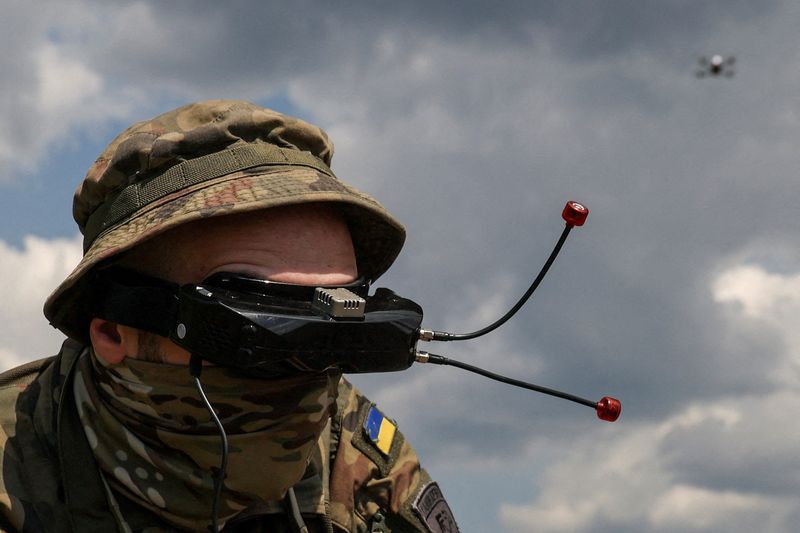By Max Hunder
KYIV (Reuters) - As Ukraine seeks the upper hand against Russia's far larger military with tens of thousands of cheap attack drones, producers and officials are working to have more components made locally to avoid exposure to shifting geopolitics.
The FPV (first-person-view) drone sector, a rapidly expanding part of Ukraine's defence effort, relies on complex supply lines to get commercially available electronic components, made mostly in China, to Ukrainian startups.
A month ago, Beijing introduced new export controls covering drones and their components. Five Ukrainians involved in the manufacture or supply of FPV drones said they had not yet choked off supplies, but highlighted the need to ramp up local output.
Taras Chmut, head of Ukraine's largest military procurement charity Come Back Alive - which has recently moved into FPV drone procurement - said domestic makers were already making FPV engines, control units, frames and wiring.
But he said the new industry needed to build expertise.
"It's an evolutionary process. You cannot simultaneously localize everything in Ukraine. Some things you may never be able to localize."
FPV drones - fast, nimble and difficult to pilot - began to be used as a cost-effective way to strike targets after Russia invaded Ukraine in February 2022.
Their deployment on both sides of the war has skyrocketed this year, and footage of FPVs costing less than $1,000 damaging multi-million dollar targets like tanks and air defence systems abounds online in videos Reuters has not been able to verify.
Mykhailo Fedorov, digital transformation minister and a champion of the drone sector throughout the war, told Reuters that switching to domestic manufacturing of components was a slow but necessary process.
"I think we can do this in several years, and that this needs to happen so that we can scale up more quickly in our own production," he said.
CHINA WORRIES
Fedorov estimated the number of drones at the front, an ever-fluctuating figure, to be in the tens of thousands, and said most of those were FPVs.
In just three days in August, Ukrainian military aid foundation Come Back Alive, alongside state-backed fundraising platform United24, raised $6.4 million for 10,000 FPV drones.
However, Chmut said that the potential for FPV use on the frontline was not being fully maximised because of supply disruptions and lack of funding for faster production.
"Right now ... there are more FPV pilots than (the) capacity to provide them with machines and weaponry."
China, which has denied Western allegations its companies have helped Iran supply Russia with drones, cited a desire to help maintain world peace in its announcement of the new export controls from Sept. 1.
Its commerce ministry did not respond to a request for comment on fears expressed by Ukrainians that the curbs were designed to limit their access to drones for use in the war.
Four Ukrainian drone makers and suppliers told Reuters the vast majority of commercially available parts for FPV drones were sourced from China.
"It's a lot. But there are other countries apart from China, and Ukraine is actively working to swap out components for domestic ones," said Chmut.
Parts are often bought in small batches on e-commerce platforms, but larger orders need agreements with producers.
Two makers told Reuters they used intermediary companies in other countries when ordering from China so that no mention of Ukraine appears on purchase and shipping documents - as makers appear scared to sell to Ukraine.

An FPV pilot said when he buys parts on Chinese online platforms to make FPVs for his own use, he cannot be sure that they will still be available a month later.
This slows the process down, as every time parts are changed the drone has to be re-tested.
